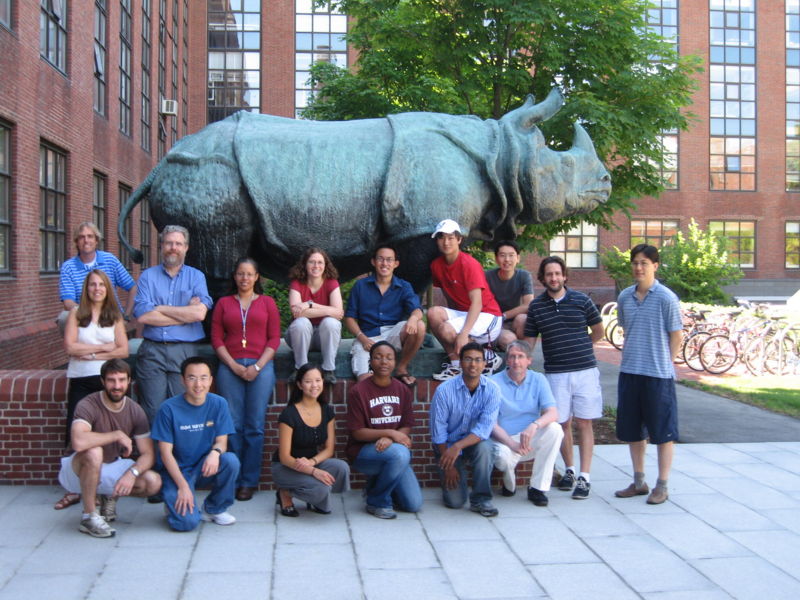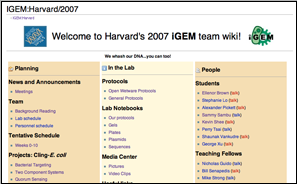Harvard
From 2007.igem.org
| Harvard University 2007 iGEM Team | ||
Students
Education Advisor
|
Teaching Fellows
Faculty Advisors
| |
The Harvard University 2007 iGEM Team
This year Harvard's team consisted of 8 undergraduate students, with backgrounds in molecular and cellular biology, biochemistry, and computer science. With the help of 6 faculty advisers and 4 teaching fellows, plus one education advisor, they devised and executed a single project with three subsections.
Cling-E. Coli
- Bacterial Targeting
- Quorum Sensing
- Two-Component Systems
Bacterial Targeting
The motivation for this part of the project was two-fold: first, to make bacteria adhere to targets with a high degree of specificity, and second, to transduce a signal upon adhesion to their targets. Initial targeting screens were done with histidine and strep2 tags to their known nickel and streptavidin targets; after characterization and high enrichment with these known substrates, random libraries were inserted into the outer membrane proteins OmpA and AIDA. As we proceed with this experiment, we hope to characterize sequences that lend specificity to calmodulin and EGF.
Quorum Sensing
Upon enrichment of e. coli to their targets, quorum sensing with a luxIR system (wildtype in Vibrio fischeri) was utilized. Quorum activity was measured through a reporter fluorescent protein (GFP and RFP). Two approaches were taken to quorum sensing: 1) a sender-receiver system in one cell, 2) senders and receivers in separate cells. We were able to demonstrate that the sender-receiver system was not self-inducing but acted with quorum activity. Quorum activity was also detected with the separate sender and receiver cells. By collaborating with the bacterial targeting subteam, we have evidence that tagged (targeted) senders and recievers are localizing to the beads; however, we are still in progress of characterizing the cell and bead density required to reach quorum levels.
Two-Component Systems
Click the picture, or click here for the more detailed Harvard iGEM 2007 wiki.

